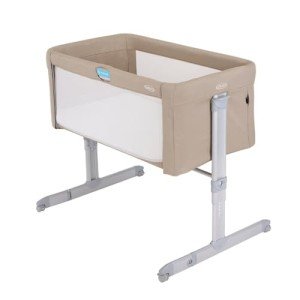10 Things Everyone Makes Up Concerning Bedside Cot For Healthy Sleeping
The Benefits of Using a Bedside Cot for Healthy Sleeping: A Comprehensive Guide
When it pertains to ensuring a healthy sleep environment for infants and their caregivers, the choice of sleeping arrangements plays an essential role. One popular choice that has gained substantial attention over the last few years is the bedside cot. This ingenious furniture piece not just takes full advantage of security but likewise promotes bonding in between moms and dad and kid during the early months. This post explores the many advantages of bedside cots, essential functions to consider, and responses frequently asked concerns.
Comprehending Bedside Cots
A bedside cot, also called a co-sleeper or sidecar crib, is a small crib that attaches straight to the side of an adult bed. This design permits parents to keep their baby close while offering a safe sleeping environment separate from the adult bed.
Secret Features of Bedside Cots
- Adjustable Height: Bedside cots normally include adjustable legs, permitting them to match the height of the parents' bed.
- Breathable Mesh Sides: Many designs include breathable mesh material, making sure proper air blood circulation and allowing parents to monitor their baby quickly.
- Secure Attachment: Bedside cots attach securely to the adult bed, lessening the danger of the baby rolling off or getting caught.
- Portable Design: Many bedside cots are lightweight and foldable, making them easy to transport for travel.
Benefits of a Bedside Cot
Using a bedside cot provides various advantages for both parents and infants. Below are a few of the main benefits of this sleeping plan:
1. Enhanced Bonding
Having a baby sleep near their parents can foster a strong emotional bond. you can try this out can quickly address their child's needs during the night, promoting security and attachment. Infants take advantage of the noise of their parent's heartbeat and voice, which can relieve them and assist them fall asleep more quickly.
2. Breastfeeding Convenience
For breastfeeding mothers, bedside cots supply immediate access to the baby throughout the night. This convenience can facilitate midnight feedings, minimize sleep disturbance, and enable a smoother breastfeeding experience.
3. Improved Sleep for Parents
With the baby nearby, parents can rest simpler understanding they can quickly react to any noises or movements. Bedside Cot For Newborn have shown that parents with a bedside cot frequently experience much better sleep, as they can maintain a level of awareness without completely waking up.
4. Encouragement of Safe Sleep Practices
Bedside cots strengthen the concepts of safe sleep by supplying a separate sleeping space for the baby. The American Academy of Pediatrics suggests a different sleeping surface to minimize the threat of Sudden Infant Death Syndrome (SIDS). A bedside cot permits parents to adhere to these standards without compromising distance.
5. Adaptability and Portability
Many bedside cots are created to be versatile and easy to move. This mobility can make transitioning from home to travel a breeze, making sure the baby always has a familiar sleeping environment.
Aspects to Consider When Choosing a Bedside Cot
When choosing a bedside cot, parents need to consider a number of essential factors to evaluate the very best option for their family's needs.
Factor
Description
Size
Make sure the cot is properly sized for your space.
Safety Standards
Search for models that comply with current security guidelines.
Relieve of Attachment
Ensure it can securely connect to your bed.
Material Quality
Choose breathable, non-toxic products for your baby's health.
Mobility
Consider whether you need a cot that is quickly transportable.
Rate
Set a spending plan, as prices can vary significantly.
Frequently Asked Questions: Bedside Cot for Healthy Sleeping
1. Are bedside cots safe for sleeping?
Yes, when utilized according to maker guidelines and safety requirements, bedside cots provide a safe sleeping space for infants. They assist lessen the threat of SIDS by making sure the baby sleeps individually but within close reach of the parents.
2. At what age can a baby start utilizing a bedside cot?
Many bedside cots are suitable for infants from birth approximately around six months or up until they start to roll over and move individually. Constantly seek advice from the manufacturer guidelines for particular age recommendations.
3. Can I use a bedside cot for twins?
While many bedside cots are designed for a single infant, there are options on the marketplace particularly designed for twins. Bedside Cot For Newborn and choose a model that uses security and space for both babies.
4. What are the options to a bedside cot?
Other sleeping arrangements consist of traditional cribs placed in the very same room, bassinettes, and co-sleepers created for safe bed-sharing. Each has its pros and cons depending on the parents' choices and living situation.
5. How do I ensure the attachment of the bedside cot is secure?
Before utilizing the cot, inspect the attachment mechanism and ensure it is tightened properly. Frequently examine the connection to ensure it remains safe and secure, especially as the infant grows and moves.
Choosing a bedside cot can be a sensible choice for new parents looking for a balance in between their baby's safety and the convenience of close proximity. The advantages of enhanced bonding, breastfeeding convenience, enhanced sleep for parents, and the promotion of safe sleep practices underscore its growing popularity. By thoroughly considering the vital features and safety guidelines, parents can offer a nurturing sleep environment that cultivates health for both themselves and their babies. With the best bedside cot, everyone can delight in a relaxing and gratifying night's sleep.
